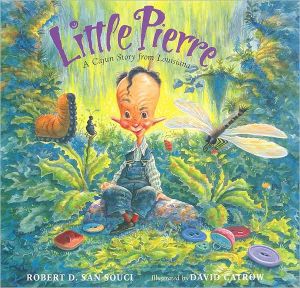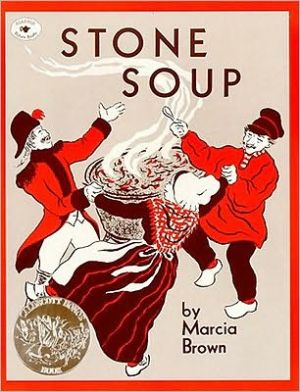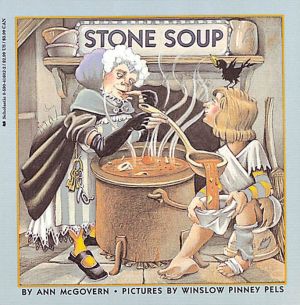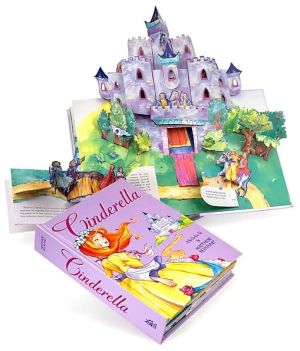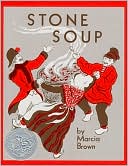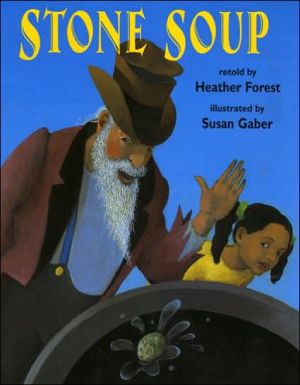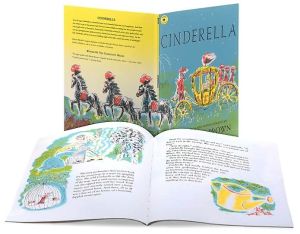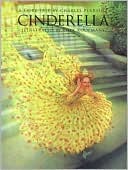Little Pierre: A Cajun Story from Louisiana
Little Pierre may be small, but he's got more marbles rolling round in his itty-bitty noggin than his four big, lazy brothers heaped together. Yet they just call him runt and ignore him. Course, when the good-for-nothing brothers flub their attempt to rescue a damsel in distress from the Swamp Ogre, it falls on Little Pierre to rescue them. Will this half-pint hero find out that his brothers were right all along—brains don't beat brawn?\ Robert D. San Souci and David Catrow, the creators of...
Search in google:
From beloved storyteller Robert San Souci comes a raucous retelling of little Tom Thumb, straight out of the Louisiana bayou.Publishers WeeklyWhen Tom Thumb, the diminutive star of European folklore, emigrated to Louisiana, he was reborn among Cajun storytellers as Ti-Poucet (the "ti" comes from the French "petit" or "small"). This frisky retelling casts the tiny fellow as Little Pierre, brother to the entertainingly lazy and witless crew of Big Pierre, Fat Pierre, Wise Pierre and Foolish Pierre. Dreaming of reward money, the older boys hatch a plan to free Marie-Louise, the daughter of a rich man, who has been kidnapped by a dangerously "tricksy" swamp ogre, so they won't have to work. When Fat Pierre points out that they don't work now, Wise Pierre offers this pearl: "When you rich,... you can hire folks to not do work for you. Then you can not do twice as much as you ain't done before. That's rit-ma-tick." Plans go awry, of course, and it falls to brainy Little Pierre to rescue his bungling brothers and Marie-Louise. San Souci (The Talking Eggs) and Catrow (Plantzilla) communicate sheer delight in the tale's zany hyperbole. The Cajun dialect and funny colloquialisms seem organic to San Souci's cadenced storytelling, while Catrow's mottled, high-wattage watercolors ratchet up the absurdity with grossly exaggerated caricatures. While the brothers exhibit delectable dim-bulb features like vacant expressions and gravity-defying pompadours, jug-eared Little Pierre resembles a young (yet still balding) Ross Perot. Ages 5-8. (Sept.) Copyright 2003 Reed Business Information.
\ Publishers WeeklyWhen Tom Thumb, the diminutive star of European folklore, emigrated to Louisiana, he was reborn among Cajun storytellers as Ti-Poucet (the "ti" comes from the French "petit" or "small"). This frisky retelling casts the tiny fellow as Little Pierre, brother to the entertainingly lazy and witless crew of Big Pierre, Fat Pierre, Wise Pierre and Foolish Pierre. Dreaming of reward money, the older boys hatch a plan to free Marie-Louise, the daughter of a rich man, who has been kidnapped by a dangerously "tricksy" swamp ogre, so they won't have to work. When Fat Pierre points out that they don't work now, Wise Pierre offers this pearl: "When you rich,... you can hire folks to not do work for you. Then you can not do twice as much as you ain't done before. That's rit-ma-tick." Plans go awry, of course, and it falls to brainy Little Pierre to rescue his bungling brothers and Marie-Louise. San Souci (The Talking Eggs) and Catrow (Plantzilla) communicate sheer delight in the tale's zany hyperbole. The Cajun dialect and funny colloquialisms seem organic to San Souci's cadenced storytelling, while Catrow's mottled, high-wattage watercolors ratchet up the absurdity with grossly exaggerated caricatures. While the brothers exhibit delectable dim-bulb features like vacant expressions and gravity-defying pompadours, jug-eared Little Pierre resembles a young (yet still balding) Ross Perot. Ages 5-8. (Sept.) Copyright 2003 Reed Business Information.\ \ \ \ \ Children's LiteratureLong ago in the bayous of Louisiana a trapper named Pierre has four good-for-not-much sons. A tiny but very wise fifth son called Little Pierre is welcomed by his parents; he is as hard-working as his brothers are lazy. When Marie-Louise, the daughter of the richest man in the bayou, is stolen by an ogre, the four brothers decide to rescue her for the reward, which includes her hand in marriage. They don't want Little Pierre to join them, but he follows them. Cleverly, he saves them from disaster and manages to free Marie-Louise for his just reward. The tale, told with lively relish, is sprinkled with Cajun words; a glossary is provided. Catrow's double-page lush watercolor scenes are lit by the yellow-green glow of the swamp. His characters reflect their attributes: neckless Fat Pierre, goofy, chinless Foolish Pierre, adorable Little Pierre. We see only parts of the Swamp Ogre, enough to stimulate our imagination to complete the horrible image. Although the text is lengthy, there is enough room for the exaggerated visuals to add humor and emotional overtones. The author's note lists his sources, basing his hero on Ti-Poucet, the traditional French form of Tom Thumb. 2003, Silver Whistle/Harcourt, Ages 5 to 8. \ — Ken Marantz and Sylvia Marantz\ \ \ School Library JournalGr 1-4-An enjoyable tale of a Cajun Tom Thumb, perfectly paired with Catrow's lush watercolor paintings. In a classic story of a triumphant underdog, Little Pierre is disparaged as a "runt" by his four older brothers but, of course, he is ultimately the one who figures out how to rescue Marie-Louise and effect the whole group's escape from the Swamp Ogre. San Souci may have done plenty of homework, referring to nearly a dozen sources he cites, but his use of dialect is inconsistent. The illustrations are superlative. Starting with the cover plate, Catrow's dense blending of color evokes the sticky humidity of the swamp scenes, with enough detail buried in the foliage to invite and reward close examination. The whimsical caricatures of Pierre and his brothers effectively portray their personalities and emotional reactions throughout the adventure, and the Swamp Ogre is perfectly disgusting and monstrous.-Sean George, Memphis-Shelby County Public Library & Information Center, Memphis, TN Copyright 2003 Reed Business Information.\ \ \ \ \ Kirkus ReviewsIn this Cajun-inflected Tom Thumb tale, pint-sized Little Pierre saves his dimwitted brothers Big Pierre, Fat Pierre, Wise Pierre, and Foolish Pierre from a Swamp Ogre, and rescues Marie Louise, a rich man's daughter, in the bargain. While doing all the chores, Little Pierre overhears his brothers scheming and tags along as they venture into the swamp. Good thing, too: when the ogre turns out to be much bigger than expected, he leads the general rout, cleverly eluding a 12-legged alligator and convincing a monstrous mud catfish to chow down on the ogre along the way. Animal and semi-human forms crouch within foliage and gnarled bark in Catrow's busy swampscapes as the Pierres hurry past oblivious, each (except for Little Pierre) looking more hilariously clueless than the last. The enormously fat ogre seems like an elemental creature too, a grossly ugly part of the surroundings until it slips headfirst down that catfish's maw. Leaving the chores to his brothers, Little Pierre goes off to a well-earned happy-ever-after with Marie Louise. A hoot, fuh shore, for true. (long source note, glossary) (Picture book/folktale. 7-9)\ \
